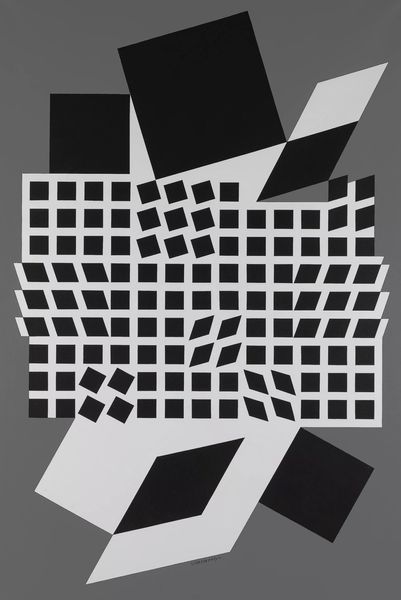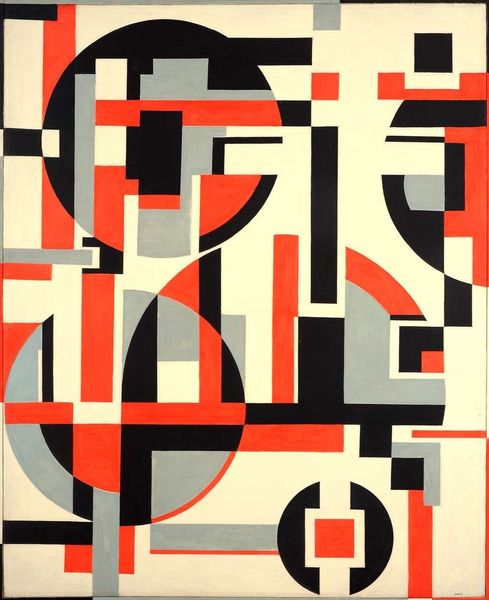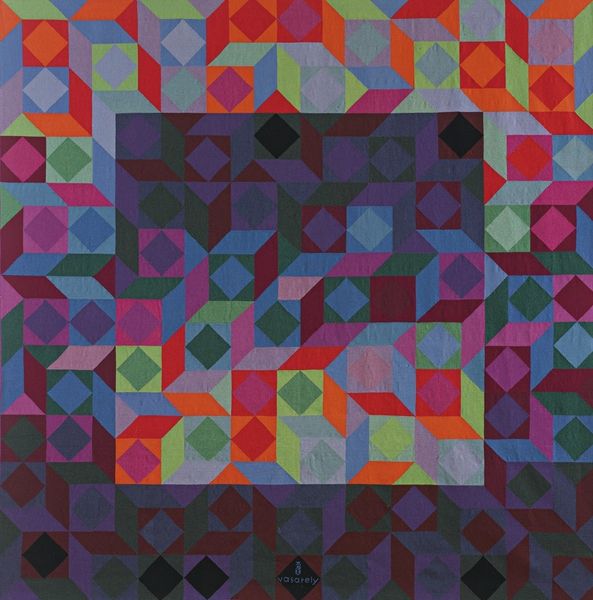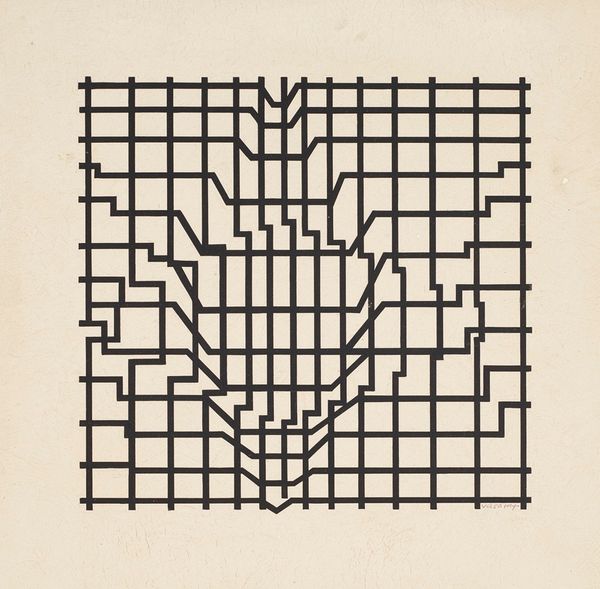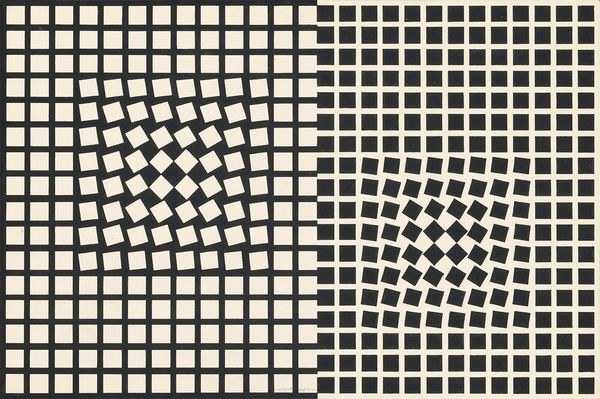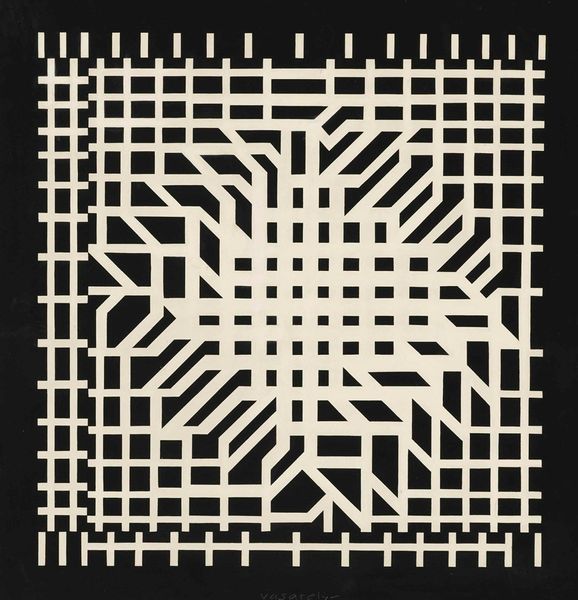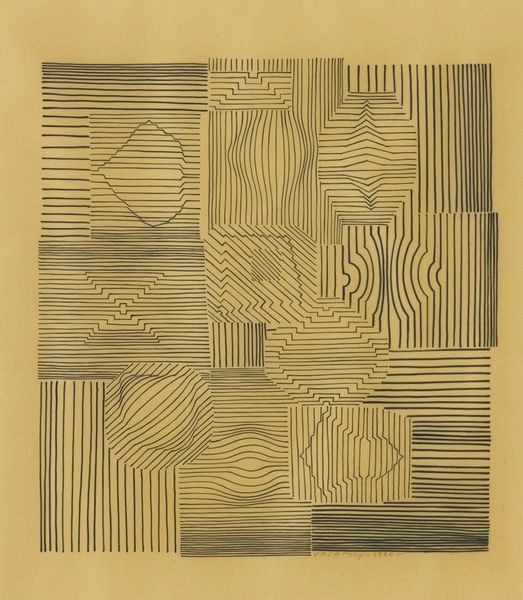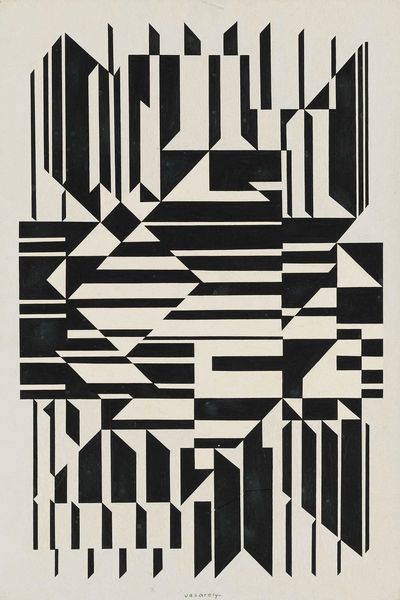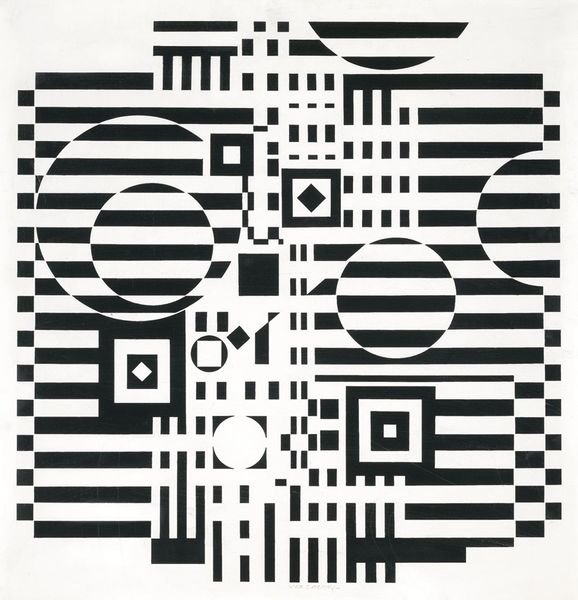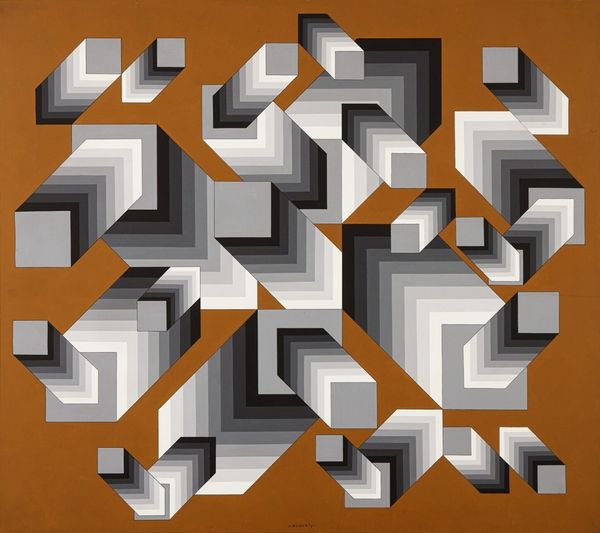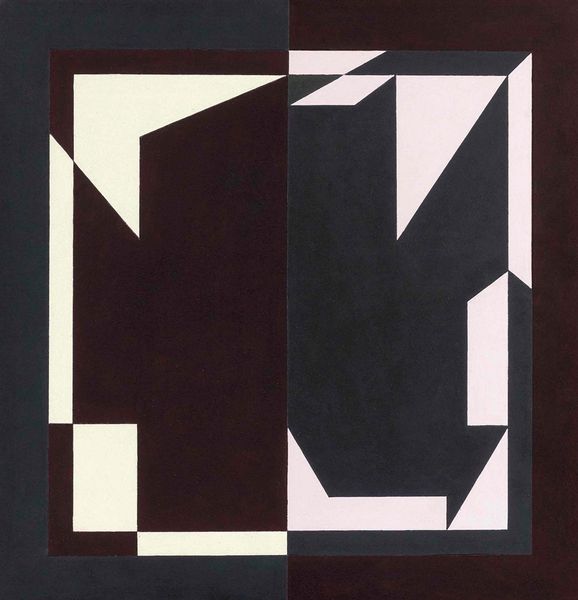
#
op-art
#
geometric pattern
#
geometric
#
abstraction
Copyright: Modern Artists: Artvee
Curator: Standing before us is "Pilich," created between 1956 and 1957 by Victor Vasarely. It’s a compelling example of his early explorations into what would later be known as Op Art, and employs mixed media, including acrylic. Editor: My first thought? Disorientation! It feels like peering into some kind of alternate reality, maybe the blueprints for a very strange building, designed to trick the eye. It pulses with an energy that's both calculated and… slightly unnerving, but utterly arresting! Curator: Absolutely, the visual tricks are key. Vasarely was fascinated by how the eye perceives form and space, creating illusions through geometric patterns. Here, we see a strict black and white palette, increasing the starkness of the shapes. These squares, rectangles, and lines create a sort of controlled chaos. Editor: That stark contrast reminds me of the yin and yang. There’s a deeper, symbolic balance here, not just a visual one. Look how the light and dark aren't merely aesthetic, they actively shape our understanding of space, turning positive into negative with a simple shift in color. I find that to be compelling! It almost reads as an effort to redefine our understanding of solidity, echoing archetypal tensions found cross-culturally. Curator: And consider its position in the context of its time. Emerging post-war, such abstraction represented freedom from traditional artistic and social norms, as well as a fascination with technology and the new frontiers of perception opened up by scientific progress. Vasarely was almost mapping a new visual language, coding perception itself! Editor: I like that, it does seem like a code. And maybe that's why it is also unsettling – it invites you in, then asks you to participate in decoding it! There's a primitive, puzzle-like quality to it, a stark return to pure, distilled form and symbol. So simple and, simultaneously, utterly profound. Curator: Yes, "Pilich" is far more than mere optical illusion. It encapsulates a crucial moment in art history where pure abstraction started playing sophisticated games with our perception. It also challenged conventional notions of how and what art communicates. Editor: It does invite meditation doesn't it? A moment of focused, internal reckoning with forms and what they truly represent. It's quite masterful, to think. The simplicity of its form carries immense profundity and force!
Comments
No comments
Be the first to comment and join the conversation on the ultimate creative platform.

